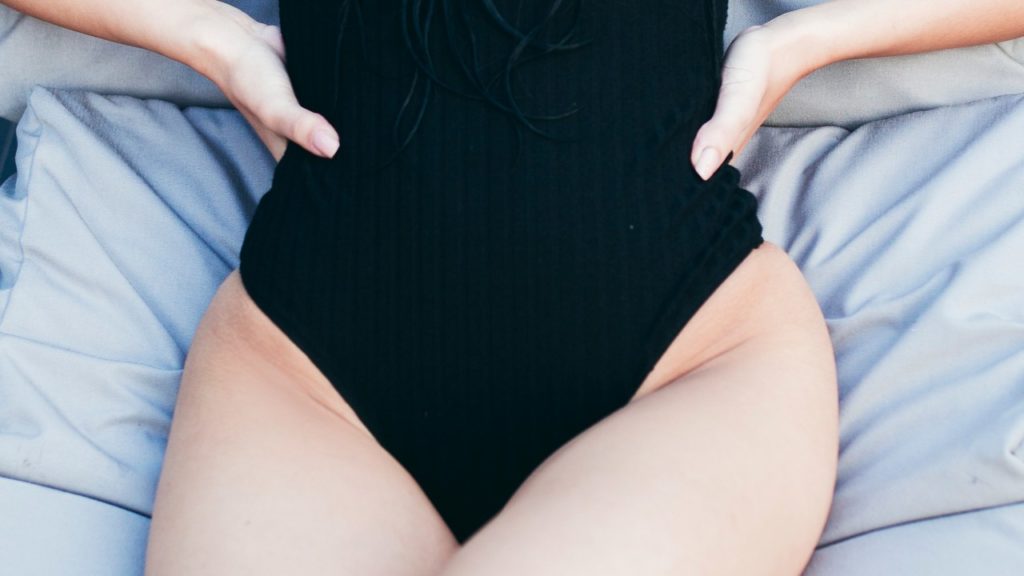If you choose to remove your body hair (and it is a choice), the summer season is usually synonymous with the labor that is waxing, threading, shaving, or lasering. In your quest to have bikini-line skin as smooth as a baby seal’s, you have to contend with the risks of removal, such as “irritation, infections, ingrown hairs, folliculitis, and cuts,” Sejal Shah, a board-certified dermatologist in New York City, tells Allure.
That may be why some hair-removal pros are turning to threading, with it’s ability to precisely pluck strays, as an option for bikini-line hair removal, as reported by New Beauty. “Threading is a process that uses two threads twisted on each other to attach to and pull out a hair from the root,” Joshua Zeichner, director of cosmetic and clinical research in dermatology at Mount Sinai Hospital in New York City, tells Allure. Ideally, the process uses 100 percent cotton threads so it involves no chemicals or other harsh ingredients that might be problematic for the sensitive skin near your nether region. “It is gentler on the skin than waxing and can be used on shorter and finer hair compared to waxing,” adds Shah. Read on to find out everything you need to know before trying this method.
Before You Thread
Threading isn’t recommended for your entire bikini line. “Threading is best for smaller areas that require great precision,” Shobha Tummala, founder of Shobha in New York City, tells Allure. Threading your full bikini line would take forever, which is why Tummala recommends sugaring or waxing first and then cleaning up any stray hairs with threading.
Even though threading is a gentler hair-removal technique, it can be problematic when it comes to your bikini line. “Like other types of hair removal, there is a risk of irritation, infection, skin abrasions, folliculitis, and ingrown hairs,” explains Shah. If you have bumps down there, whether from shaving, acne, or ingrowns, threading can be even more challenging and even make the problem worse “since the thread doesn’t have a smooth surface to glide along,” Tummala says. There’s also the risk that the rubbing of the threads against your existing bumps could make them more inflamed, says Shah.
There’s one more reason to pause before you pluck. “Because the person doing the threading often holds one end of the thread in their mouth, there is a potential risk any bacteria or other oral infections can be transferred to the person receiving threading,” says Shah.
Best Practices for a Bare Bikini Line
So, if threading, waxing, and shaving are all a little risky for the sensitive skin along your bikini line, what do dermatologists recommend? For a permanent solution, Zeichner recommends laser treatments, which can range between $400 and $700 per session. “It is certainly more expensive than waxing or threading, but will allow you to say goodbye to unsightly and uncomfortable ingrowns forever,” he says.
If you’re not sure you want to make going hairless a full-time thing, Shah recommends choosing a hair-removal method based on your skin type (i.e. if you have super sensitive skin, stay away from waxing). “For those clients seeking a gentler alternative to bikini line waxing, we recommend sugaring,” Tummala says.
How to Care for Skin Post-Threading
After any sort of hair removal, “please be kind to your skin,” says Tummala. Avoid harsh products, UV exposure, and steam rooms. “Use a cold compress to help soothe the hairless skin if you feel any discomfort or irritation after your treatment,” she adds. In between removal sessions, try to stick to gentle fragrance-free cleansers and exfoliate regularly to help prevent ingrown hairs. “I generally recommend once per week and waiting 48 hours after any hair removal to exfoliate,” Shah says.
Whether you thread or use another hair-removal method, Zeichner says it’s vital to care for your skin barrier with a light petroleum-based moisturizer, like Aquaphor, to help form a protective seal over your newly bare skin.


